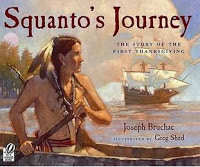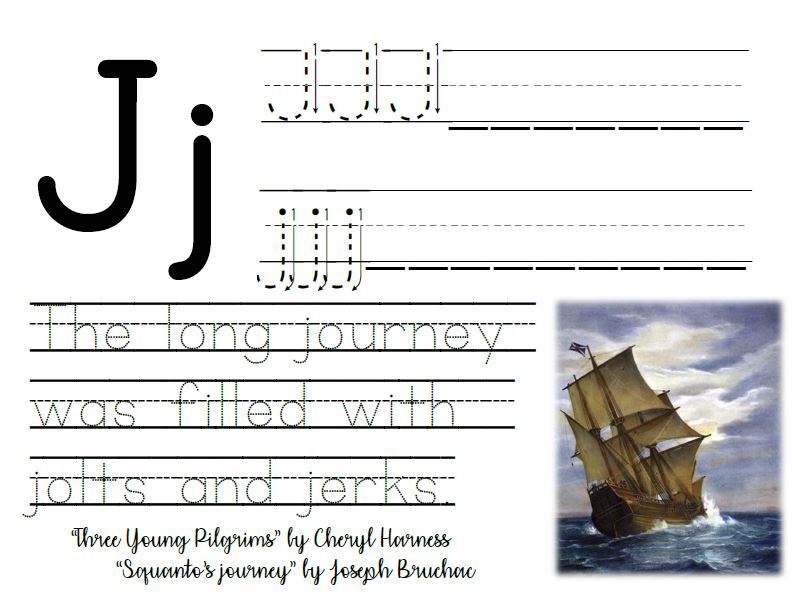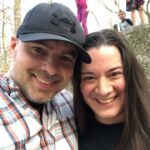Welcome! The following is the 10th in a series of 24 lesson plans, Learning the ABC’s through Literature, the 1st year. It was written especially for classroom use within a homeschool co-op, and was designed to teach the alphabet, over the course of a school year, using classic children’s literature. The books are primarily taken from the Five in a Row Curriculum by Jane Lambert, with several others added as well. The plans were designed to give just a little bit more, so it could be more usable within a classroom setting. Teacher’s questions, printables, craft ideas, classroom handouts, etc are included within all the lessons. This is geared towards a K-1st grade class. If you are interested in something similar for older children, the Learning through Literature series uses more Five-in-a-Row (FIAR) books and is a more developed concept of this same idea and also uses mostly Five in a Row books. You can find it here, Learning through Literature, the 2nd year, geared for 1st-3rd and Learning the USA through Literature – the 3rd year, geared for 2nd-4th and using books from Volume 4 of Five in a Row.
J: Squanto’s Journey / Three Young Pilgrims
What I Need:
- Squanto’s Journey
- Three Young Pilgrims
- J Handwriting Sheet (printable version here)
- Beads
- Leather String
- Indian headbands (made of brown construction paper)
- Feathers or
Construction Paper Feathers - Stapler
- Scissors
- Hole Puncher
- Scotch Tape
- Map
- White 11×17 paper
- Ribbon
If you are following along with the A-Z curriculum, this lesson should fall right around the time of Thanksgiving. We used the letter J to talk about the Journey the Pilgrims made to come to America, and read the story Three Young Pilgrims as our main story (I love the pictures in this book!). I skimmed through the book, Squanto’s Journey – but told only snippets of the story while showing the pictures. Timewise, we couldn’t cover two full books, but some of Squanto’s Journey book was a little heavy, and it moves a bit slowly. So while I wanted to show Squanto’s side of the story (and explain the reason he knew English when the Pilgrims arrived), I chose to use the other as our main book.
Introduction
Does anyone know the name of a holiday coming up this month? (Thanksgiving)
- One, by the Pilgrims
- And one by an Indian named Squanto.
They arrived in 1621. Hard. Many people died on the boat over. There was sickness, a very cold, hard winter, and very little food. But often, whenever something wonderful or glorious happens, almost always, someone paid a price or did something hard to allow it to happen. Just like with Jesus. Just like with William Tyndale. Just like the many soldiers who we remembered on Veterans Day. This is their story.
Read the Stories
Read Three Young Pilgrims
Be sure to stop and let the class look at the pictures throughout the book. There are lots of neat details hidden within the illustrations. Be sure to point out where the Baby was born at sea (Oceanus), the homes in the settlement, the foods they had at thanksgiving, etc. So, so many neat pictures
At the conclusion of this story, you can mention the Indian Squanto in the book.
When spring came, out walked Samoset. He says, “hello”, and then went to get Squanto. How did Squanto know English so well?
How did Squanto know English? (you can let the class guess, but this is not a quick, easy, answer. If it were me, I would read Squanto’s Journey to familiarize yourself with the story and then re-tell a quick summary of it as you skim through the pictures.) The summary is that Squanto was kidnapped years earlier, by Thomas Hunt (You can read a pretty detailed version of the true account here), He was eventually, freed by some friars, taken care of by several European families, and helped to get back to his home years later, only to discover his entire tribe wiped out, likely by sickness.
This is his story. (skim Squanto’s Journey), retelling in your own words while showing the pictures.
Handwriting Sheets:
(Together, make J’s in the air)
We have borrowed this catchy song from “Handwriting without Tears” fairly often in class (sung to the tune of If You’re Happy and You Know It)
Where do you start your letters? (At the top)
Where do you start your letters? (At the top)
If you want to write a letter, then you better better better
Remember, to start it at the top
Pilgrim Girl Hat’s and Indian Headdresses
For the Pilgrim Bonnets…
I followed Martha Stewart’s Tutorial. All you need is some 11×17 paper, ribbon, and scotch tape. The first one may take a few minutes to figure out, then after that it is easy-peasy. If you’d like to read it instead, this tutorial is written out, and the one I followed before I knew there was a video:
For the Native American Indian Headdresses (and optional Vests)








